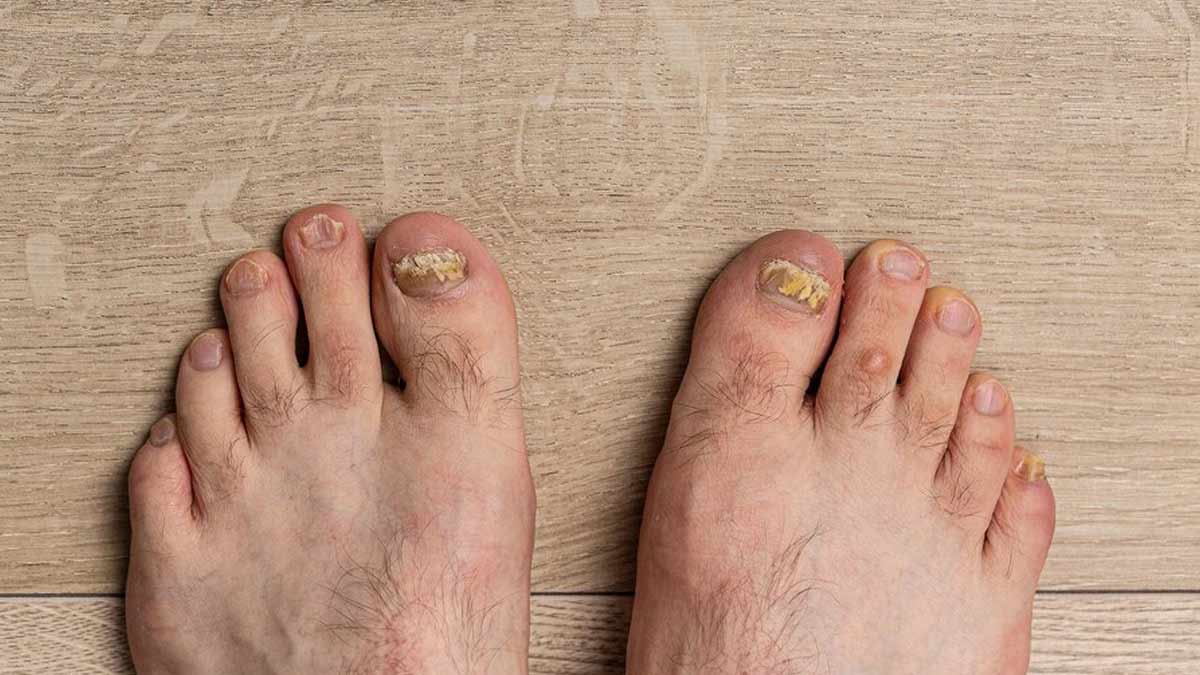
Toenail and foot fungus, commonly known as onychomycosis and athlete's foot, respectively, can be both unsightly and uncomfortable. Preventing and treating these fungal infections is essential for maintaining healthy feet.
Table of Content:-
According to the American Academy of Family Physicians, onychomycosis is a fungal infection that causes discoloration, thickening, and separation of the toenail from the nail bed. This disease occurs in 10% of the general population but is more common in older adults.
Athlete’s foot on the other hand can affect any portion of the foot, but usually affects the space between the toes, and is characterised by skin fissures or scales that can be red and itchy, according to the Centres for Disease Control and Prevention.
Here are some effective ‘at-home’ tips to keep your toenails and feet fungus-free.

Practice Good Foot Hygiene
Start with the basics – keep your feet clean and dry. Wash your feet daily, making sure to thoroughly clean between your toes. After washing, ensure your feet are completely dry, especially the spaces between the toes where moisture can accumulate.
Choose the Right Footwear
Opt for breathable shoes made of materials like leather or mesh to allow air circulation. Avoid tight-fitting shoes that can create a warm, damp environment conducive to fungal growth. Rotate your shoes to give them time to air out.
Keep Toenails Trimmed
Trim your toenails regularly and straight across to prevent ingrown toenails, which can create entry points for fungal infections. Use clean, sanitised nail clippers to avoid spreading any existing infection.
Change Socks Regularly
Moisture is a breeding ground for fungus. Change your socks daily, especially if they become damp. Choose socks made of moisture-wicking materials to keep your feet dry. If you have sweaty feet, consider bringing an extra pair of socks to change during the day.
Avoid Walking Barefoot in Public Areas
Fungi thrive in warm, damp environments like public swimming pools, showers, and locker rooms. Wear flip-flops or shower shoes in these areas to reduce your risk of exposure.
Also Read: Remedies that can Help you Fight Foot Fungus

Use Antifungal Powders or Sprays
Incorporate antifungal powders or sprays into your foot care routine. Apply them to your feet and inside your shoes to help prevent fungal growth. Focus on areas prone to moisture, such as between the toes.
Choose Breathable Footwear
Allow your feet to breathe by choosing shoes made of breathable materials. Leather and mesh are good options. Avoid wearing the same pair of shoes every day; give them time to air out.
Practice Proper Nail Care
Be cautious when getting pedicures. Ensure that the salon follows proper hygiene practices, and consider bringing your tools. If you suspect a fungal infection, avoid nail polish until the infection clears.
Natural Remedies
Some natural remedies, such as tea tree oil and coconut oil, are believed to have antifungal properties. Apply these remedies to affected areas, but consult with a healthcare professional before use.
Consult a Healthcare Professional
If you notice signs of toenail or foot fungus, such as discolouration, thickening, or itching, consult a healthcare professional. Early intervention can prevent the infection from spreading and facilitate effective treatment.
Also Read: Redness And Swelling Due To Ingrown Toenails? Here Are Its Causes And Treatment Measures
Preventing and treating toenail and foot fungus requires consistent attention to foot hygiene and lifestyle choices. By incorporating these tips into your daily routine, you can reduce the risk of fungal infections and enjoy healthy, happy feet. Remember, if you suspect a fungal infection, seeking professional advice is crucial for proper diagnosis and treatment.
Also watch this video
How we keep this article up to date:
We work with experts and keep a close eye on the latest in health and wellness. Whenever there is a new research or helpful information, we update our articles with accurate and useful advice.
Current Version